The Hall of Fame Index: Who is the most valuable second baseman of all-time?
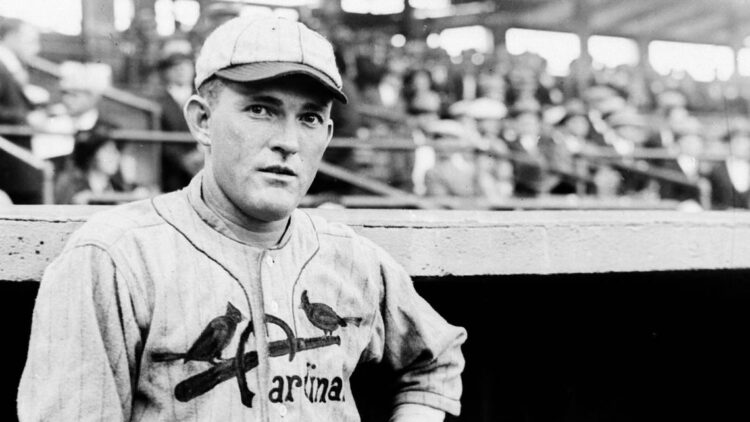
Every position is unique when it comes to evaluating the top five guys. There is no doubt about the top four second basemen. Obviously, the order in which they go will be debated and it was in The Hall of Fame Index Part II. Getting to the fifth spot is a bit more challenging. Technically, Charlie Gehringer is fifth in the index, but that becomes a bit problematic when we consider the career of Jackie Robinson.
It’s impossible to give him credit for numbers he never produced, but we could easily imagine him getting called up five seasons earlier in a multi-chrome environment. If we simply replicate the first five seasons and put those at the beginning of his career then we see something completely different with both his career and peak value.
| BWAR | FWAR | WS/5 | Total | |
| Before | 61.7 | 57.2 | 51.4 | 160.5 |
| First Five | 35.7 | 33.7 | 29.8 | 99.2 |
| After | 97.4 | 90.9 | 81.2 | 259.7 |
Obviously, the career value ends up being much different, but the peak value also is considerably different. If we just simply doubled the first five seasons then it would be 198.4 in comparison with the 160.7 it was. He did have a couple of brilliant seasons outside of those first five seasons, it actually would be higher than that. So, he obviously was more valuable at his best than Gehringer was at his. We will use the new numbers and I’ll reconfigure the peak value as well to account for these five seasons.
Additionally, we are altering the peak offensive and fielding numbers slightly to account for the fact that Robinson’s last couple of seasons would not have been peak seasons in a normal career. In order to do that we will take the top seven consecutive seasons for both the hitting and the fielding in addition to our normal tests.
Career Value
| BWAR | FWAR | WS/5 | Total | |
| Eddie Collins | 123.9 | 120.5 | 114.8 | 359.2 |
| Rogers Hornsby | 127.1 | 130.3 | 100.4 | 357.8 |
| Nap Lajoie | 107.3 | 102.2 | 99.2 | 308.7 |
| Joe Morgan | 100.5 | 98.8 | 102.4 | 301.7 |
| Jackie Robinson | 97.4 | 90.9 | 81.2 | 259.7 |
We can what if this thing to death and I would love to do that if we had the space. Some people think Robinson retired earlier than normal because of the added stress of being the first African American in the big leagues. That may be true. He just might have retired rather than play below a standard he had set for himself. We can easily surmise those first five seasons though. Even with those five seasons he wasn’t quite at the level of the top four guys.
I’ve mentioned Allen Barra before and we recently did an article comparing Robinson more directly with Eddie Collins. See, Barra had Hornsby as the top second baseman of all-time and put Robinson second. I’m not going to dismiss that notion out of hand, but it would seem far-fetched based on the numbers we see here.
Seeing Collins on top is a bit of a surprise, but we have to remember we are just talking about career value. Hornsby had some injury trouble at different points in his career and Collins literally played forever. That combination played into the totals we see here. He also played on some really good teams which helped him in win shares. Career value will likely be a different deal.
Peak Value
| BWAR | FWAR | WS/5 | Total | Index | |
| Hornsby | 93.5 | 97.1 | 72.4 | 263.0 | 620.8 |
| Collins | 78.2 | 76.1 | 70.8 | 225.2 | 584.4 |
| Lajoie | 74.9 | 72.2 | 64.2 | 211.3 | 520.0 |
| Morgan | 67.9 | 67.0 | 64.2 | 199.1 | 500.8 |
| Robinson | 78.7 | 71.7 | 62.2 | 212.6 | 472.3 |
Barra spent the majority of his time arguing about who was better when they were at their best. That’s a compelling question, but we can’t ignore longevity and durability. Morgan and Lajoie were arguably as dominant as Robinson, so you could say he was better than them at his best, but there is very little to suggest that he was as dominant as either Collins or Hornsby.
This is where terminology gets us. Both Collins and Hornsby played in segregated ball. So, it is reasonable to argue that any player that played in the integrated game was better by comparison. Robinson could hit, he could field, hit for power, and run. Certainly one could claim he was better because he could do it all, but that ignores the fact that some skills are more valuable than others. Hornsby and Collins both hit better than Robinson and Hornsby certainly hit for more power.
Offensive Statistics
| OPS+ | Rbaser | OW% | wOBA | |
| Hornsby | 175 | -8 | .815 | .459 |
| Lajoie | 150 | -11 | .758 | .401 |
| Collins | 142 | 39 | .715 | .409 |
| Morgan | 132 | 80 | .702 | .372 |
| Robinson | 132 | 32 | .684 | .406 |
Again, dominance is a different animal than greatness. We can measure dominance. Most of these numbers are taken by comparing the player with the average in the league. wOBA is different in that regard. So, Morgan might have fared better in a better offensive era. We could definitely show these numbers in a different way by comparing the number of times each player led the league in important offensive categories. We will focus on the three slash statistics (AVG, OBP, SLG) along with home runs, runs, RBI, and stolen bases. Just like with the index, we will count Robinson’s first five seasons twice.
| AVG | OBP | SLG | HR | Runs | RBI | SB | |
| Hornsby | 7 | 9 | 9 | 2 | 5 | 4 | 0 |
| Lajoie | 5 | 2 | 4 | 1 | 1 | 3 | 0 |
| Collins | 0 | 0 | 0 | 0 | 3 | 0 | 3 |
| Morgan | 0 | 4 | 1 | 0 | 1 | 0 | 0 |
| Robinson | 2 | 1 | 0 | 0 | 0 | 0 | 4 |
This is what Bill James lovingly called the black ink test. Like any other test it has its limits. You can’t measure greatness only by who leads the league most of the time. However, the fact that Hornsby has 36 different points here as compared to 16 for Lajoie and less than ten for all of the other players is compelling on a number of levels. It certainly lends credence to the idea that Hornsby is the most dominant second baseman of all-time and lends some credence to Lajoie taking the top spot. However, let’s see how they fare in their best seven seasons.
| OPS+ | Rbaser | OW% | wOBA | |
| Hornsby | 193 | -5 | .843 | .491 |
| Lajoie | 171 | -5 | .807 | .434 |
| Collins | 164 | 27 | .786 | .422 |
| Morgan | 153 | 55 | .770 | .408 |
| Robinson | 141 | 22 | .711 | .420 |
There can be no denying that Lajoie was a more dominant performer (at least offensively) than Collins. Of course, the question in the headline is who is the more valuable second baseman. To put it simply, Collins did it for a lot longer, so he probably deserves the nod in terms of longevity, but it is fair to argue that Lajoie was better at his best than Collins was at his.
Ironically, the switch to seven seasons in peak performance doesn’t help Robinson that much. He does perform better by eliminating some lackluster seasons at the end of his career, but it ends up helping the other guys more. That’s one of the problems with cherry-picking data. Granted, we didn’t add those first five seasons like we did with the index scores, but you can only make so many allowances before it just gets to be completely unfair.
Fielding Numbers
| Rfield | DWAR | TZ2B | DWS/5 | |
| Lajoie | 83 | 10.1 | 79 | 19.2 |
| Robinson | 81 | 10.1 | 50 | 11.0 |
| Hornsby | 54 | 13.9 | 30 | 11.9 |
| Collins | 35 | 8.1 | 40 | 21.7 |
| Morgan | -48 | 3.8 | -43 | 18.4 |
These numbers are interesting on a number of levels. You could argue that Robinson was the best fielder in the bunch. He only had ten seasons to amass his Rfield and total zone runs. If he had spent all of his time at second and played for 15 years he likely would have more than anyone here. It is also surprising to see how valuable Hornsby was defensively. He also spent considerable time at shortstop, so that explains the DWAR.
There are some metrics that put Lajoie as the most valuable fielder in the history of the game. Those metrics are probably outdated, but when you consider both the hitting and fielding data it is certainly defensible to put him in the second spot all-time. Of course, we also want to look at the seven best seasons for each player.
| Rfield | DWAR | TZ2B | DWS/5 | |
| Lajoie | 65 | 8.1 | 88 | 9.7 |
| Collins | 64 | 7.4 | 64 | 9.7 |
| Robinson | 59 | 7.6 | 49 | 8.7 |
| Morgan | 29 | 6.8 | 29 | 8.9 |
| Hornsby | 19 | 4.9 | 19 | 6.1 |
As we saw before, when we decide to try to stack the deck for Robinson we end up actually end up helping the others more. In particular, Morgan ends up looking a lot better than he was before. Collins also got a significant boost as well. In fact, in terms of peak value defense, Collins is neck and neck with Lajoie. The key for Collins and Morgan is that their best fielding seasons actually occurred at the same time as their best hitting seasons.
We did not see that in Hornsby’s case. We could probably find another seven year stretch that would have been more valuable for him defensively. The trouble is that the offense wouldn’t have been there. Ultimately, we want to know how good they were when they were at their most valuable. It is interesting that all of them were positive impact defenders when they were at their best.
Playoff Numbers
| PA | SLASH | HR | Runs | RBI | SB | |
| Morgan | 222 | .182/.323/.348 | 5 | 26 | 13 | 15 |
| Robinson | 160 | .234/.335/.343 | 2 | 22 | 12 | 6 |
| Collins | 147 | .328/.361/.414 | 0 | 20 | 11 | 14 |
| Hornsby | 53 | .245/.288/.327 | 0 | 6 | 5 | 1 |
| Lajoie | — | —/—/— | — | — | — | — |
If we are to judge players on how often they help their team win big games then Collins has to stand head and shoulders above the others. His team won four World Series titles which beats Morgan’s two and Robinson’s one. His numbers were also considerably better in the playoffs than the others. The question in this case (and in every case involving postseason performance) is in how much extra credit these numbers give him.
After all, Lajoie never got the opportunity. Is it because there was something wrong with him as a player? I suppose one could argue that. We find this argument used a lot in other sports with players that never win. There must have been something wrong with them because they couldn’t lead their team to victory. Maybe they just weren’t good enough. Maybe they weren’t good leaders. It is something that might hold water for some individual players. You have to look at who surrounded them.
Collins and Morgan were surrounded by some of the most talented teams in the history of the sport. The Dodgers of the 1950s were pretty darn talented too, but weren’t quite as good as the Yankees. The Indians have had individual seasons where they have been brilliant, but throughout most of their history they’ve lacked enough talent to win. That’s not on Lajoie.
BWAR MVP Points
| Top 10 | Top 5 | MVP | PTS | |
| Hornsby | 3 | 1 | 11 | 124 |
| Lajoie | 5 | 2 | 6 | 85 |
| Robinson | 3 | 3 | 5 | 74 |
| Collins | 5 | 9 | 1 | 70 |
| Morgan | 2 | 2 | 4 | 56 |
As you might have guessed, we doubled the first five seasons again for Robinson. So, he was the best player in the National League in a third of the seasons he played (three of ten). He was also the Rookie of the Year and that season isn’t even included. So, there can be no doubt that he belongs in this group. The question is where to place him. The trouble is when you have players that played regularly for 20 or more seasons. It’s hard to discount that kind of longevity.
It is also difficult to completely buy into the notion that Robinson should get credit for things he didn’t actually do. We can argue that he would have done them. Heck, you could argue that he would have done more than that. The problem is that when you give into this thinking you can stretch that logic to other guys. We can do it to put guys in their proper historical context, but we have to be careful not to overreach.


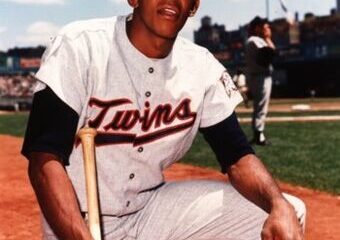
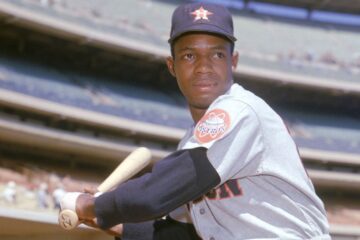
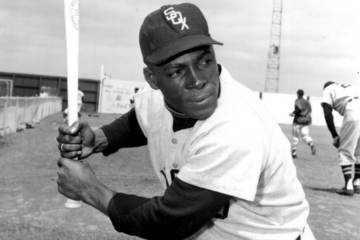
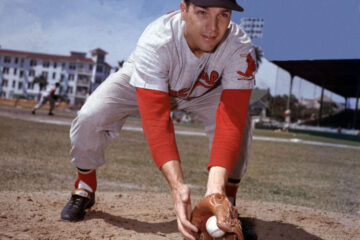
1 Comment
Lajoie had 31 black line numbers, whereas Collins only led the league 4 times. Case closed. Lajoie was significantly better than Collins. The guys who played in that time also thought so. Collins was a banjo hitter. Lajoie was a slugger and still hit for higher batting average than Collins.